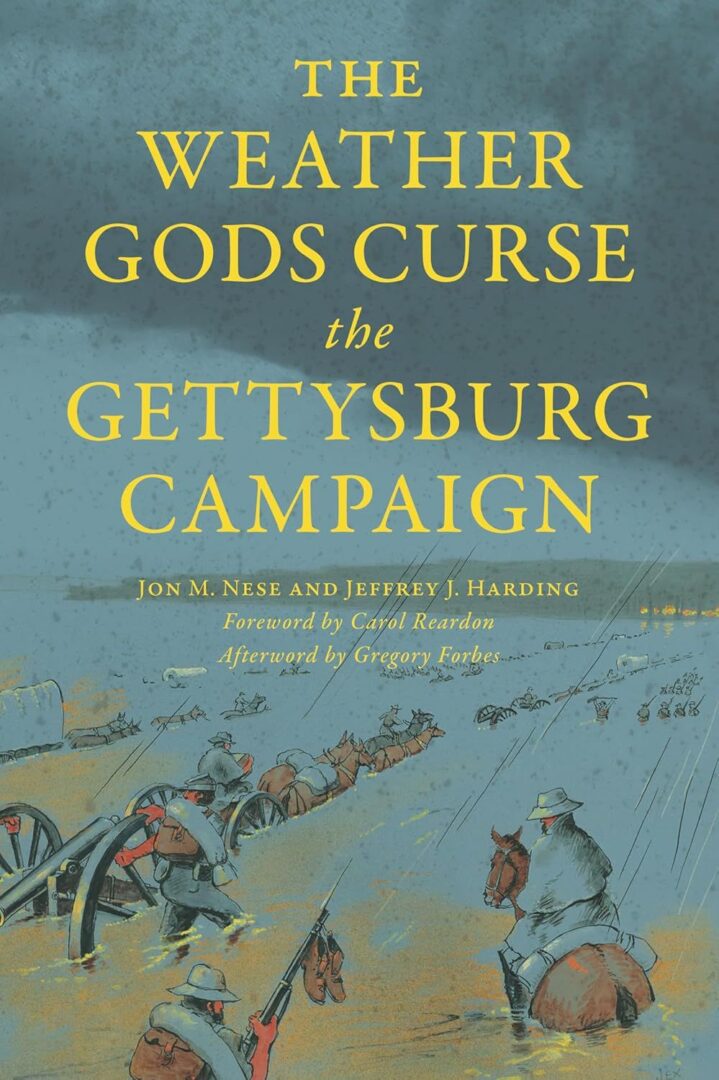This story originally appeared in The Centre County Gazette.
It was mid-June in 1863, and Union soldiers were on the move, heading north from Virginia in an attempt to catch up with General Robert E. Lee’s Confederate troops. Having fallen miles behind, the troops were forced to march over 25 miles per day for four days straight during a heatwave so oppressive, firsthand accounts describe horrifying scenes of soldiers dropping dead from sunstroke and dehydration along the road.
“If only they would have had weather forecasts, they would have known this was not a good four-day period to force your soldiers to march. But they didn’t know that,” Jon Nese, a Boalsburg resident and meteorology professor at Penn State, said.
Nese and Jeffrey Harding, a historian and Licensed Battlefield Guide at Gettysburg National Park, analyze this and other examples of how weather affected the six-week period surrounding one of the Civil War’s most significant battles in a new book, “The Weather Gods Curse the Gettysburg Campaign,” published by The History Press.
Nese is a former on-air personality at The Weather Channel and appears regularly on WPSU’s Weather World. He said that Harding, having seen Nese present on-air snippets about the weather during the Battle of Gettysburg, initially reached out wanting help figuring out what the “real-feel” heat index was on the battlefield in 1863. According to Nese, this was a challenge because, although temperatures were recorded three times a day by a weather observer in Gettysburg, the observer did not measure humidity.
Nese turned to the records of weather observers from nearby Harrisburg who measured humidity and other factors and extrapolated that information to conditions in Gettysburg. Together, he and Harding published a paper about the weather during the Battle of Gettysburg, which took place from July 1 to 3, and in which heat again played a major factor, as soldiers contended with temperatures in the high 80s, high humidity and hot sunlight.
When they decided to expand the paper into a book, Nese and Harding examined the period between June 3 and July 14, which historians consider the entire Gettysburg Campaign. In addition to stifling heat, the armies grappled with violent storms, torrential downpours, mud and flooding. For example, as Lee’s men retreated after the loss at Gettysburg, they were trapped for days in Williamsport, Maryland, unable to cross the Potomac River, which had risen to over 15 feet.
To uncover details about the weather challenges facing both armies, Nese located sources like the Naval Observatory in Washington, D.C., who used state-of-the-art weather instruments for the 1800s.

“Their weather observations turned out to be a huge treasure trove of information that we mined,” he said.
They also used reports from newspapers like the Baltimore Sun and the Alexandria Gazette, information from individual weather observers in Maryland, Virginia and Pennsylvania and quotes from soldiers’ diaries.
“It was like building a puzzle,” Nese said.
The book also applies technology created by NOAA scientists to rebuild weather maps from the 1800s using available weather data and meteorological equations.
“For the first time ever that system has been applied to the Civil War — and we did it,” Nese said.
In addition to meteorological maps and data that weather junkies will enjoy, each chapter of the book traces military actions and includes historical human-interest stories about things like soldiers’ uniforms; a weather observer in Virginia whose son was killed in battle; and a soldier awarded a Medal of Honor for saving a comrade from heatstroke.
As they promote their book, Nese and Harding have been appearing on podcasts and will be doing book signings and presenting a talk at the Sacred Trust event on Saturday, July 5, in Gettysburg. The book can be purchased from Amazon, Barnes & Noble and other major book retailers.



